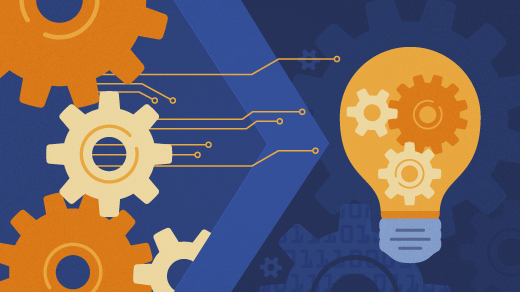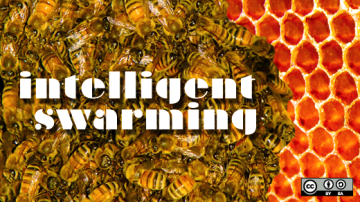Over the past few years, design has become more than a discipline. It has become a mindset, one gaining more and more traction in industrial practices, processes, and operations.
People have begun to recognize the value in making design the fundamental component of the process and methodologies aimed at both the "business side" and the "people side" of the organization. In other words, "thinking with design" is a great way to approach business problems and organizational culture problems.
Design thinkers have tried to visualize how design can be translated as the core of methodologies like Design Thinking, Lean, Agile, and others in a meaningful way, as industries begin seeing potential in a design-driven approach capable of helping organizations be more efficient and effective in delivering value to customers.
But still, many questions remain—especially questions about the operational aspect of translating core design values. For example:
- "When should we use Design Thinking?"
- "What is the best way to run a design process?"
- "How effectively we can fit design into Agile? Or Agile into the design process?"
- "Which methodologies are best for my team and the design practices I am following?"
The list goes on. In general, though, the tighter integration of design principles into all phases of development processes is becoming more common—something we might call "DesOps." This mode of thinking, "Design Operations," is a mindset that some believe might be the successor of the DevOps movement. In this article, I want to explain how open principles intersect with the DesOps movement.
Eureka
The quest for a design "Holy Grail," especially from a service design perspective, has led many on a journey through similar methodologies yet toward the same goal: that "eureka" moment that reveals the "best fit" service model for a design process that will work most effectively. But among those various methodologies and practices are so many overlaps, and as a result, everyone is looking for the common framework capable of assessing problems from diverse angles, like business and engineering. It's as if all the gospels of all major religions are preaching and striving for the same higher human values of love, peace, and conscience—but the question is "Which is the right and most effective way?"
I may have found an answer.
On my first day at Red Hat, I received a copy of Jim Whitehurst's The Open Organization. What immediately came to my mind was: "Oh, another book with rants about open source practices and benefits."
But over the weekend, as I scanned the book's pages, I realized it's about more than just "open source culture." It's a book about the quest to find an answer to a much more basic puzzle, one that every organization is currently trying to solve: "What is that common thread that can bind best practices and philosophies in a way that's meaningful for organizations?"
This was interesting! As I dove more deeply, I found something that made even more sense in context of all the design- and operations-related questions I've seen debated for years: Being "open" is the key to bringing together the best of different practices and philosophies, something that allows us to retain their authenticity and yet help in catering to real needs in operations and design.
It's also the key to thinking with DesOps.
DesOps: Culture, process, technology
Like every organizational framework, DesOps touches upon culture, process, and technology—the entire ecosystem of the enterprise. Because it is inspired by the culture of DevOps, people tend to view it more from the angle of technological aspects (such as automation, continuous integration, and a delivery point of view). However the most difficult—and yet most important—piece of the DesOps puzzle to solve is the cultural one. This is critical because it involves human-to-human interactions (unlike the machine-to-machine or human-to-machine interactions that are a more common part of purely technological questions).
So DesOps is not only about bringing automation and continuous integration to systems-to-systems interactions. It's an approach to organically making the systems a part of all interaction touch points that actually enable in human-to-human communication and feedback models.
Humans are at the center of DesOps, which requires a culture that itself follows design philosophies and values, including "zero waste" in translation across interaction touch points (including lean methodologies across the activity chains). Stressing dynamic culture based on agile philosophies, DesOps is design thinking as a way of life.
But how can we build an organizational culture that aligns to basic DesOps philosophies? What kind of culture can organically compliment those meaningfully integrated system-to-system and system-to-human toolings and eco-systems as part of DesOps?
The answer can be found in The Open Organization.
A DesOps culture is essentially an open culture, and that solves a critical piece of the puzzle. What I realized during my book-length exploration of DesOps is that every DesOps-led organization is actually an open organization.
DesOps, open by default
Broadly, DesOps focuses on how to converge different work practices so that an organization's product management, design, engineering, and marketing teams can work together in an optimal way. Then the organization can nurture and sustain creativity and innovation, while at the same time delivering that "wow" experience to customers and end users through products and services.
At a fundamental level, DesOps is not about introducing new models or process in the enterprise; rather, it's about orchestrating best practices from Design Thinking, Lean Methodologies, User-Centered Design models, and other best practices with modern technologies to understand, create, and deliver value.
Let's take a closer look at core DesOps philosophies. Some are inherently aligned with and draw inspirations from the DevOps movement, and all are connected to the attributes of an open organization (both at organizational and individual levels).
Being "open" means:
- Every individual is transparent. So is the organization they're part of. The upshot is that each member of the organization enables greater transparency and more feedback-loops.
- There's less manipulation in translation among touch points. This also means the process is lean and every touch point is easily accessible.
- There's greater accessibility, which means the organizational structure tends towards zero hierarchy, as each ladder is accessible through openness. Every one is encouraged to interact, ask questions, and share thoughts and ideas, and provide feedback. When individuals ask and share ideas across roles, they feel more responsible, and a sense of ownership develops.
- Greater accessibility, in turn, helps nurture ideas from bottom up, as it provides avenues for ideas to germinate and evolve upward.
- Bottom-up momentum helps with inclusivity, as it opens doors for grassroots movements in the organization and eliminates structural boundaries within it.
- Inclusivity reduces gaps among functional roles, again reducing hierarchy.
- Feedback loops form across the organization (and also through development life cycles). This in return enables more meaningful data for informed decision making.
- Empathy is nurtured, which helps people in the organization to understand the needs and pain-points of users and customers. Within the organization, it helps people identify and solve core issues, making it possible to implement design thinking as a way of life. With the enablement of empathy and humility, the culture becomes more receptive and will tend towards zero bias. The open, receptive, and empathetic team has greater agility, one that's more open to change.
- Freedom arrives as a bonus when the organization has a open culture, and this creates a positive environment for the team to innovate, not feeling psychologically fearful and encourage fail-fast philosophies.
We're at an interesting historical moment, when competition in the market is increasing, technology has matured, and unstructured data is a fuel that can open up new possibilities. Our organizational management models have matured beyond corporate, autocratic ways of running people and systems. To ensure we can sustain our organizations in the future, we must rethink how to we work together and prepare ourselves—how we develop and sustain a culture of innovation.
Open organization principles are guideposts on that journey.







Comments are closed.